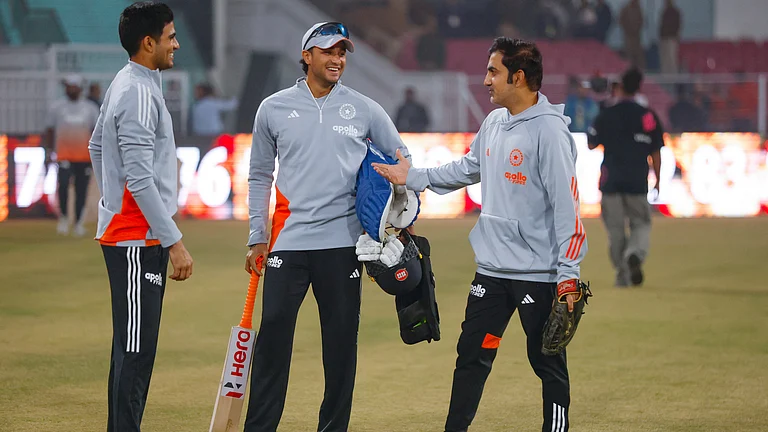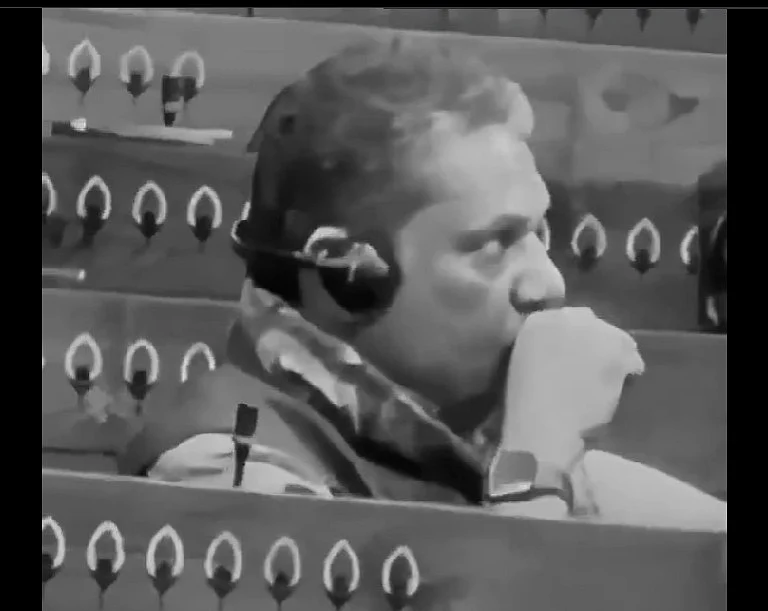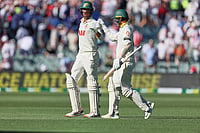At a time, when 'The Kashmir Files' has been sparking debates across the country on the issue of rehabilitation of displaced Kashmiri Pandits, Congress MP Vivek Tankha moved a bill in the Parliament for the social, political and economic rehabilitation of Kashmiri Pandits, who come in the category of internally displaced persons due to conflict and violence.
A closer look at the data on internally displaced communities, due to conflict and violence in India and their rehabilitation process, highlights that India has no uniform policy or act for their rehabilitation.
Who are Internally Displaced Persons?
United Nations High Commissioner for Refugees (UNHCR) defines Internally displaced people (IDPs) as those who have been displaced from their homeland but have not crossed a border to find safety. Unlike refugees, they are on the run at home. Displacement may be caused due to natural disasters, climate change, development activities or violence and conflict.
According to data, there have been 55 million internally displaced people across the world by the end of 2020, 48 million as a result of conflict and violence. In India, there are 9,29,318 displaced people. Out of this, the number of IDPs due to violence and conflict stood at 4,73,000 as of December 2020.
Since Independence, India has time and again witnessed bouts of violent clashes amongst communities which have led to large-scale displacement -- exodus of the Kashmiri Pandits in 1989, the violence in the Northeast including the Nellie massacre of 1983, the exodus of Bru tribes from Mizoram in 1997, the Gujarat riots of 2002, the anti-Sikh riots of 1984, the Muzaffarnagar riots of 2013, and the recent clashes in Northeast Delhi -- the list of internally displaced people living in camps and awaiting justice is long.
What makes their rehabilitation and compensation a long and never-ending process in India?
The Existing Legal Framework for Internally Displaced Persons:
Internally Displaced people broadly fit into three categories: displaced due to natural disasters, displaced due to development activities like dam constructions, and displaced due to instances of violence and conflict.
India has laws in place for the first two categories — The Land Acquisition Act, 2013, and the Disaster Management Act, 2005. But there is no law as such for the third category of displaced persons in India.
Rehabilitation of displaced communities is carried out by the State governments with the help of the Centre through various rehabilitation and assistance schemes.
Currently, there are seven sub-schemes under an umbrella scheme called “Relief and Rehabilitation of Migrants and Repatriates” for 2021-22 to 2025-26 with a total outlay of Rs 1,452 crores.
These include financial assistance and other facilities for families of affected civilian victims of terrorist violence including militancy, insurgency, communal, left-wing extremism violence, cross-border firing, etc.
Here’s a quick look at what the current approach has achieved so far for the IDPs displaced due to violence and conflict in India:
Lack of uniformity in compensation
Northeast violence
In 2014, during the Assam violence, over 2,000 families, whose houses were burnt down during the clashes between Bodos and Adivasis in Kokrajhar, got Rs 50,000 each to rebuild their houses, according to a media report. These families were lodged in make-shift camps in their respective villages. They got work under MGNREGA.
In 1997, following ethnic tension, around 5,000 families comprising around 30,000 Bru-Reang tribals were forced to flee Mizoram. These people were housed in temporary camps at Kanchanpur, in North Tripura.
Till recently, the IDPs in Tripura camps got Rs 5 per day per person plus 600 grams of rice. Minors got Rs 2.5 and 250 grams of rice. Each family was given Rs 10 per month to purchase cooking oil. Residents of these camps are neither entitled to work under the MGNREGA nor are given farmland to earn a livelihood.
In 2020, the government announced a package to rehabilitate the displaced people within Tripura. It has been more than two decades since the Bru tribe was displaced, a whole generation grew up in camps and yet even after a Rs 1200 crore scheme, there are all kinds of hurdles, one of them being a National Green Tribunal (NGT) order.
In 2021, The NGT issued notices to the Union environment ministry, Tripura’s forest department and a district administration in the State on a petition challenging the resettlement of 40,000 Bru tribals. More than two decades have passed, governments have come and gone, and yet the internally displaced people find no place to call home.
Muzaffarnagar Riots
Muslim families who fled their homes during the communal violence in 2013 were offered a maximum of Rs 25,000 as compensation for lost property. However, the State government made another offer to the displaced families, i.e. Rs 5 lakh each if they did not return to their villages.
Over 900 displaced families in Muzaffarnagar and Shamli districts signed affidavits stating that they will not return to their villages, in return for a compensation of Rs 5 lakh from the state government.
Kashmiri migrants
The government has time and again devised policies for the Return and Rehabilitation of Kashmiri migrants, under the Prime Minister’s packages in 2008 and 2015
Various components of these policies include the assistance of Rs. 7.5 lacs for repairing their fully or partially damaged houses, Rs 2 lacs for dilapidated or unused houses, Rs. 7.5 lacs for purchase/construction of a house in group housing societies for those who have sold their properties during the period after 1989.
“To repair damage property one should be able to prove that they had once owned the property.” Sakshi Tikoo (24), a Kashmiri Pandit, whose family stayed for a long time in Muthi camp at Jammu tells Outlook. “After spending years in camps, we were offered one room dome quarter near Muthi camp area in Jammu. One room quarter in Jammu in place of a large bungalow in Kashmir!” she exclaims with disappointment.
The cash relief has been increased over the years from Rs 500 per family in 1990 to Rs 13,000 per family and Rs 3250 per person. Nearly 3,800 Kashmiri migrants were rehabilitated directly by the way of providing government employment.
Despite, all these the Kashmiri Pandits remain a displaced community. Congress MP Vivek Tankha while demanding minority status for the community emphasised that the government needs to create a secure environment for Kashmiri Pandits to return.
Border displacement in Jammu and Kashmir, driven by clashes near the LOC between Indian and Pakistani-administered areas is another major concern. Reportedly, cross-border shelling in 2017 and 2018, forced more than 160,000 people from their homes.
It's rather important to note here, that providing money and relief packages cannot alone solve the problem of persons displaced due to riots, instances of violence, and conflict.
Can a change in approach make a difference?
From the few instances quoted above, it is rather clear that the level of compensation and treatment to internally displaced persons varies from state to state.
Rajya Sabha MP Prof. Manoj K Jha tells Outlook, “Rehabilitation and compensation for those internally displaced due to conflict and violence should definitely be high on the priorities of both the union and the state governments. Dealing with this kind of displacement will require a quite different approach though. First - there's the question of justice. If such groups and communities cannot access justice then any attempt to compensate or rehabilitate will be incomplete or inadequate.”
However, a quick google search will tell you how difficult it is for displaced people in India to find justice. The Nellie massacre of 1983 in Assam remains one of the biggest cases of “justice denied”, in the county. The Tiwari Commission report on the massacre remains outside the public domain. According to news reports, around 688 cases were filed in relation to the massacre, however, only 310 cases were charge-sheeted. Even those were eventually closed, and not a single perpetrator was punished. In the name of compensation, Rs 5,000 was given to families affected by the then Congress government that also won the elections that followed the violence in the state.
Speaking on the politicisation of such instances of violence, Prof. Jha explains, “We still have not been able to successfully resist the urge to politicise such issues. In today’s time, some violence is acceptable, some are not. We must unequivocally denounce all kinds of violence and seek to extend a healing touch to all the victims.”
"Beyond violent 'events', we must also look at violent 'processes'. There are several groups and communities that face structural violence and are forced to migrate from one place to the other. We have to look at their particular concerns and address them so that they are not forced to leave their homes." he adds.
No doubt the degree of violence and nature of conflict varies from place to place, but still, the inability of displaced people in India to access justice and rehabilitation remains a constant concern throughout history.

























